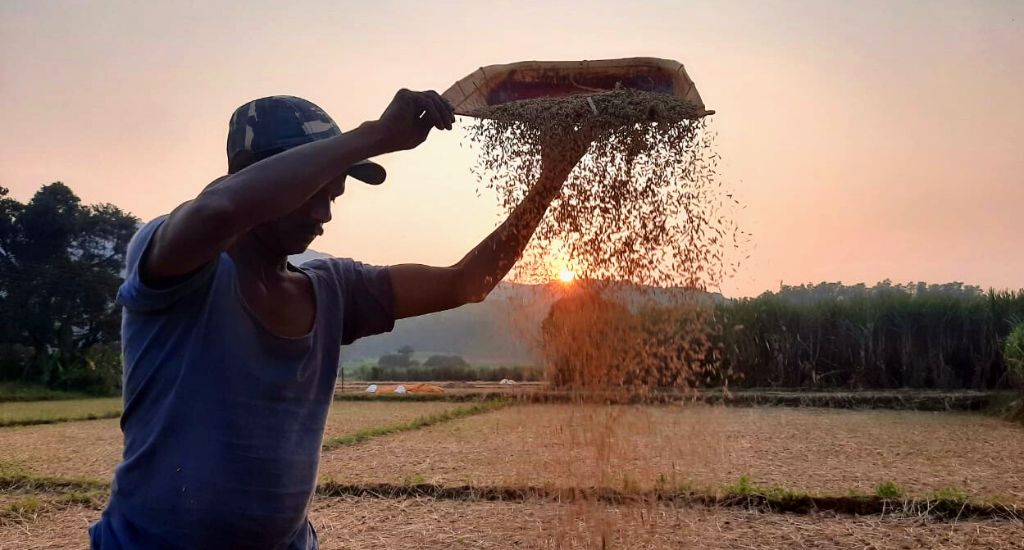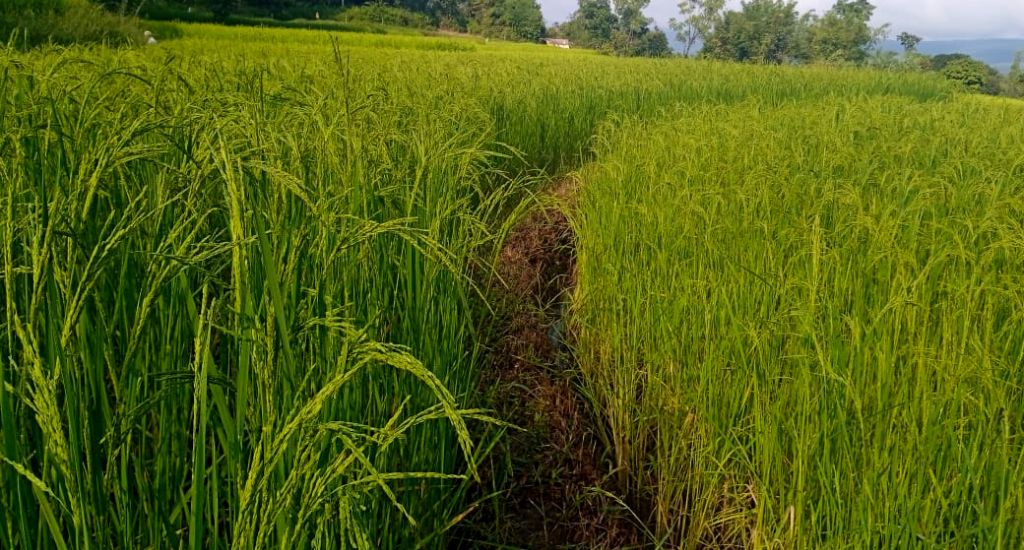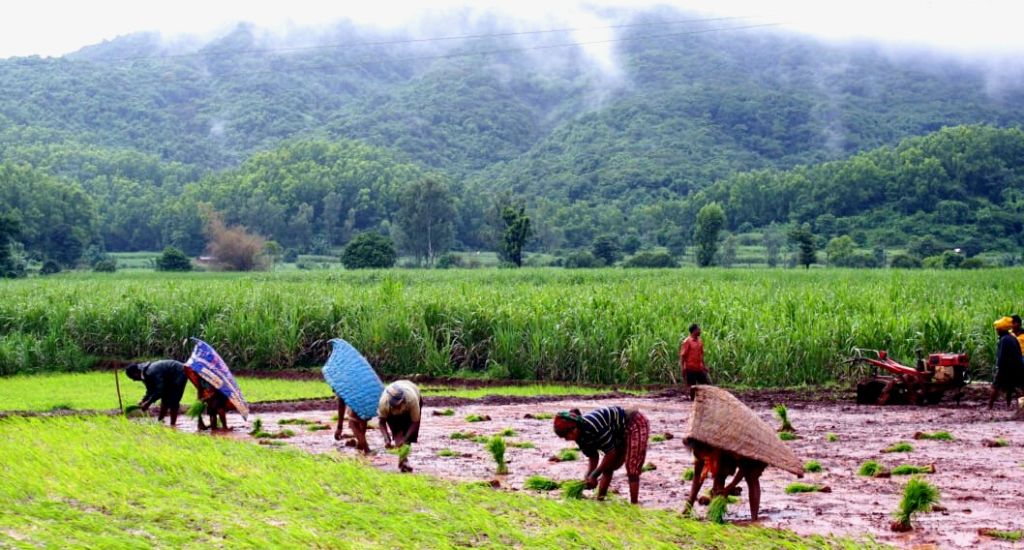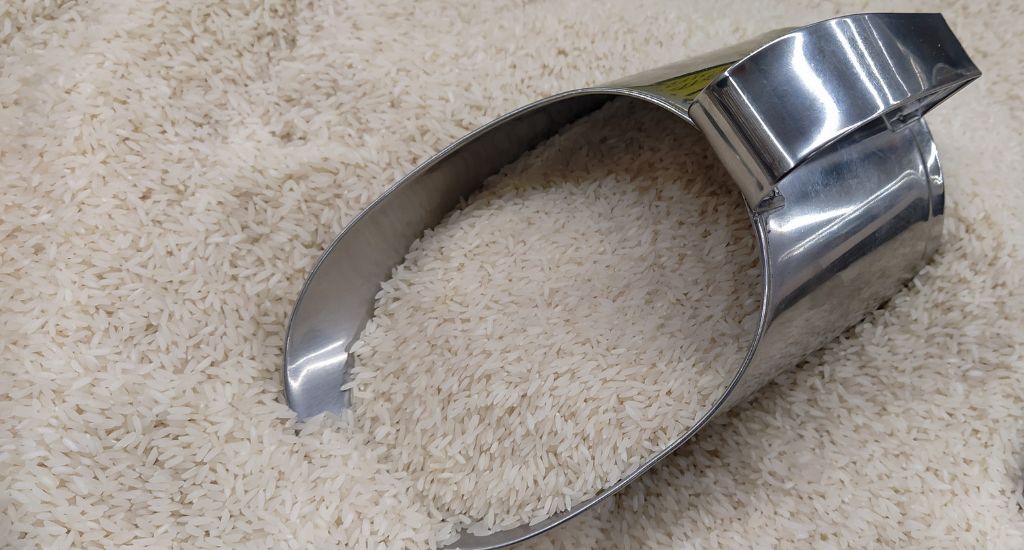
The Kolhapur rice tipping the scale one grain at a time
Nearly a decade after getting the recognition it deserved – bagging a GI tag in 2015 – Maharashtra’s fragrant and slender Ajara Ghansal rice is now becoming the foodie’s favourite.

Nearly a decade after getting the recognition it deserved – bagging a GI tag in 2015 – Maharashtra’s fragrant and slender Ajara Ghansal rice is now becoming the foodie’s favourite.
Whenever Health Policy Researcher Sunil Nandraj and his wife Usha, an Information System Specialist leave Maharashtra and head to Goa, there is one pitstop they always make.
Following their nose, and taste buds, the couple loves to swing by one of the villages of Ajara taluka of the Amboli ghat every time they drive down the Kolhapur-Mapusa highway.
Sunil and Usha stop there to buy Ajara Ghansal, a variety of rice that is so aromatic it fits an old Sanskrit maxim – aghranam ardha bhojanam, the sweet ambient scent of food satiates half the hunger even before it is partaken.
A native cultivar improved by traditional agricultural methods over the past century, it is a lesser-known cousin of Ambemohar, the scented rice Maharashtra is famous for.

Ajara Ghansal is a portmanteau of Ajara, the place of origin, ghan (aroma) and sal (elegantly thin).
Also Read | Money blooms in India’s ‘flower village’ of Nikamwadi in Maharashtra
Growing in fields, the standing crop smells as sweet as the cooked rice.
“If you pass by Ajara Ghansal fields laden with paddy, its heady scent will give you the feeling of entering a perfume parlour,” said Milindrao Patil, 52, who switched from news photography to farming 15 years ago – a trade-off that’s paid off.
Ajara Ghansal is a late bloomer in the rice market, becoming a media darling after earning the geographical indication (GI) tag in 2015 – used on products that have a specific geographic origin. It is a tag which underscores certain qualities a region might give to a particular item and therefore boosts the reputation of that item, like Darjeeling tea or Alphonso mangoes from the Konkan region of Maharashtra.

After Ambemohar, this is the second rice from Maharashtra to get the GI tag.
People from all across Maharashtra seek out this rice. So do the Indian diaspora.
“Five to seven years ago, Ajara Ghansal’s fame was limited to Kolhapur and its neighbouring districts,” said Sambhaji Sawant, a paddy farmer of Ajara village and chairman of the Ajara Ghansal Farmer Producer Company.
Also Read | Agri-entrepreneurship: Inspiring family story in a cup of lemongrass tea
The newfound status, along with the growing trend to embrace the life of a “locavore” (a person whose diet is mainly local food), has pushed up demand.
“People from all across Maharashtra seek out this rice. So do the Indian diaspora,” Sawant said.
Over the last two decades the price has gone up from Rs. 40 a kg in 2000 to Rs. 120 in 2022. But supply was limited because most farmers in Ajara taluka grow high-yielding, hybrid varieties, setting aside only a small parcel of their farms for Ajara Ghansal.
As with most aromatic and indigenous rice varieties, such as Joha in Assam, the crop demands utmost care but produces little. Till recently, the major portion of the harvest was set aside for festivals, weddings, or family get-togethers. Leftover grains were shared among relatives or sold to traders.

Also Read | One man’s bamboo quest breaks records
On the flipside of this demand surge, unscrupulous traders were caught selling Ajara Ghansal mixed with the similar-looking, non-aromatic Kumud rice from Karnataka.
Ajara Ghansal is cultivated in the Sahyadri foothills, known for its cool, dry climate, fertile laterite soil, and rainwater runoff as well as water from the Chitra river, about 5km from Ajara. It has thrived and retained its aroma because of a combination of all these factors.
Sowing and transplantation of the saplings coincide with the maiden monsoon showers in June. The timing defines grain quality and yield. Ajara Ghansal requires around 155 days to mature, more than a month of what other varieties take.
But Ajara Ghansal has its limitations, such as long stalks, a lengthy maturity period, and low yield.
“But the promise of a better price is attractive,” said Jaisinh Narvekar, 61.
There was a time when Sawant, now in his seventies, had to do a lot of legwork to persuade farmers to preserve this heritage variety.
“Months before the sowing season, we would visit villages to convince farmers to grow it, even on a guntha (1,000 square feet),” he said.
He formed farmers’ clubs, encouraged training on best agricultural practices, and helped found the Ajara Ghansal Shetkari Mandal.
National Bank for Agriculture and Rural Development (NABARD) and the state agriculture department chipped in too with loans, subsidies and technical assistance.

“Ajara Ghansal is now grown by around 750 farmers in 35 villages,” said agriculture officer TA Momin.
Also Read | How pearl farms bring money to a parched village in Maharashtra
The total acreage is 250 hectares, with an output of 3,850 quintals.
Scientists tinkering with the genes of Ajara Ghansal are said to have developed a superior variety.
According to a botanist at Shivaji University, Dr NB Gaekwad, the “mutant” would take care of Ajara Ghansal shortcomings. It would be a shorter paddy plant (50-60% shorter than the parent), yields at least three times greater than existing yields and maturing faster – around a fortnight or three weeks before the original.
“We have been able to maintain the original properties like colour, smell, taste and nutritional value of the said varieties intact,” he said.
But this new variety won’t be released for at least another three years as it has to pass field trials.
The lead image at the top shows a farmer winnowing paddy grains to separate lighter impurities (Photo by Hiren Kumar Bose)
Hiren Kumar Bose is a journalist based in Thane, Maharashtra. He doubles up as a weekend farmer.